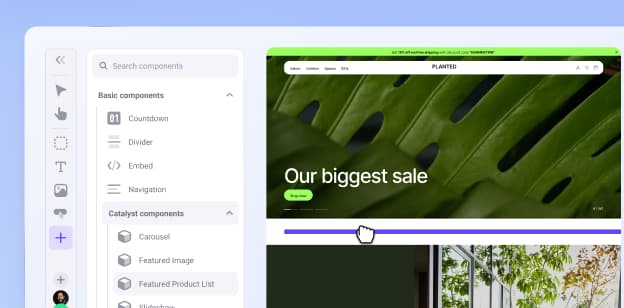by BigCommerce Team
For brands facing a variety of business challenges, headless commerce can enable you to expand the limits of your existing ecommerce platform. You can be more flexible and responsive to changing customer and market expectations. You can choose best-in-breed solutions that perfectly serve your business needs, and you can reach customers shopping across multiple channels.
As a refresher, headless commerce is one piece of a more modular, API-driven approach to SaaS ecommerce. Headless itself means the decoupling of the front-end systems and back-end ecommerce platform. The systems then communicate through APIs. This enables you to choose the ecommerce platform that works best as the engine for your online store, while also working with the front-end of your choice, be it a CMS, a DXP, a PWA, or a custom solution.
That’s the quick version. Here we won't be delving into the ins and outs of headless because sometimes what you're more interested in is the solution, rather than the nuts and bolts process. That's why we’re sharing headless commerce success stories to give you a sense of what’s possible with various use cases and some out-of-the-box thinking.
We’ll look at four brands that innovated using headless, how they did it, and what they were able to accomplish by decoupling their front-end and back-end systems.
Why Businesses Choose Headless
Before we look at our specific businesses, let’s quickly consider the reasons most merchants choose headless. It’s not the right choice for every business. Those who choose to go this route do so for a number of reasons, but they typically fall into one of four buckets.
1. Omnichannel.
Commerce is everywhere. At the dawn of ecommerce, it was exciting news that people weren’t just shopping at stores—they were shopping at home on their computers. Today’s market is a wee bit different. People are shopping on mobile devices, on social networks, and in online marketplaces like Google Shopping and Amazon. People are even shopping through IoT (Internet of Things) devices.
Ecommerce stores looking to capitalise on customers shopping across multiple channels need to be able to provide commerce anywhere. For brands trying to reach an audience across platforms, headless can facilitate a true omnichannel experience by connecting all consumer touchpoints seamlessly. This comes down to the importance of powerful and flexible APIs which can enable businesses to easily connect to different frontend experiences from a single backend.
2. Favoured front-end.
Another reason brands turn to headless is because they already have a front-end solution they’re happy with, and they just need more from their back-end system.
For example, if they were on WooCommerce, they might have outgrown the ecommerce functionality of the plugin, but still want to keep their carefully-crafted WordPress site. Or if they were using Drupal on their content-driven website and wanted to start selling for the first time, they would need to find a way to connect it to a commerce engine. Headless can allow them to keep what works and add or upgrade what doesn’t.
3. Developer workflow.
Similar to having a front-end you’re already happy with, your developer team might have a certain technology or programming language they’re comfortable working with. Headless enables your team to keep what works with their workflow while streamlining their processes and developing efficiencies.
4. Customisation and innovation.
For many, the reason to choose headless is because they have big ideas that no one system can provide out of the box. Maybe they’ve found the customization they need by working with open source platforms in the past, but couldn’t handle the long development cycles and maintenance.
Headless can allow them to keep the customization and lose the cost and upkeep. Or maybe they’ve worked on SaaS, but found it was limiting their innovation. Headless can provide them the open SaaS experience that’s the best of both worlds. APIs enable the flexibility they need to think beyond the limits of any one platform or technology and seamlessly connect systems in a more modular fashion.
Being innovative and delighting customers with unique and compelling digital experiences can make or break an ecommerce business. Headless can make it easier to customize and pivot your site to stay on the cutting edge.
Now let’s look at a few headless success stories, and how these brands used headless solutions in clever ways to innovate and grow.
Explore Catalyst, the future of storefront experience.
Experience the storefront that's setting a new standard for modern commerce, designed for your whole team to love.
K2 Sports
K2 Sports is a collection of iconic global brands devoted to “creating unforgettable experiences for outdoor enthusiasts”. This includes everything from skiing and snowboarding to snowshoes and backcountry safety equipment. Each brand under the K2 umbrella maintains a distinct voice and point of view while sharing the K2 standards for customer satisfaction and pioneering innovation.
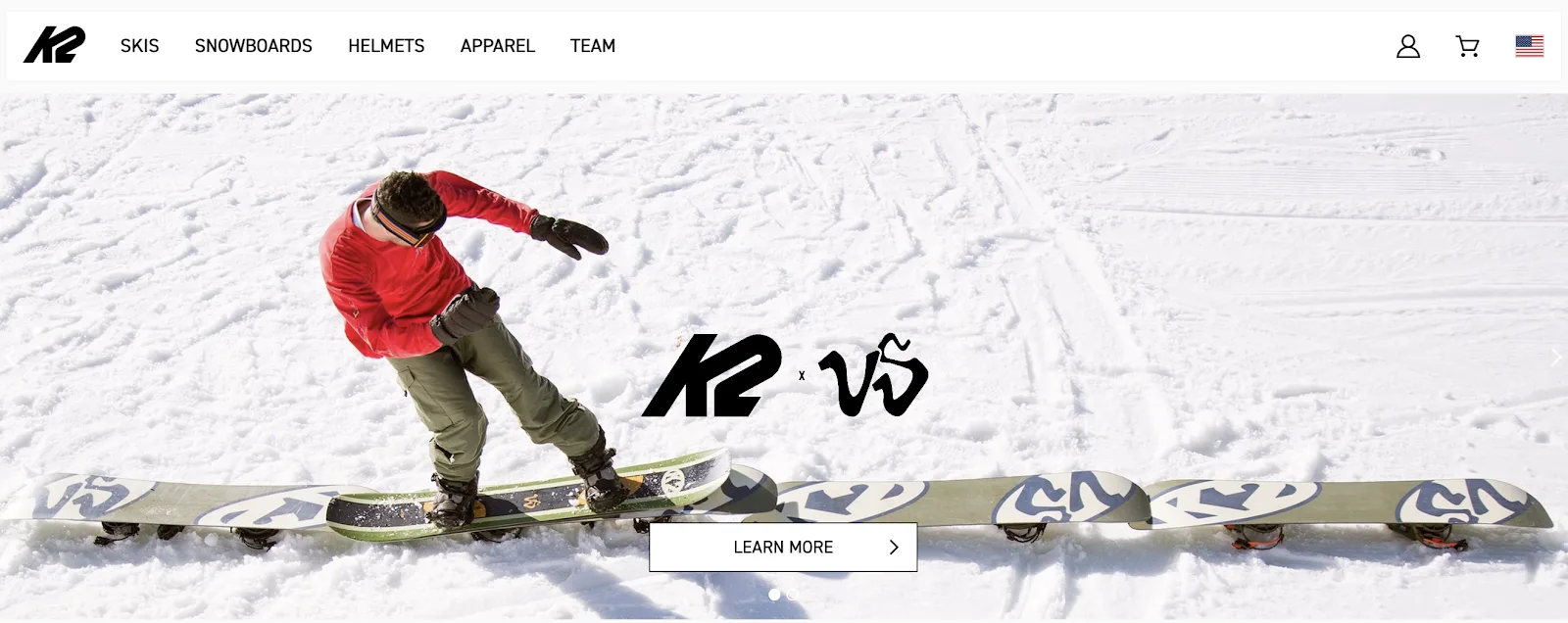
1. Challenges faced.
On its former platform, Salesforce Commerce Cloud (formerly Demandware), the K2 brand collective felt limited in what it could do. The company was unable to create and maintain a cutting-edge shopping experience due to a lack of APIs. Additionally, its former platform was not a SaaS (Software as a Service) platform, so K2 was responsible for the costs and development time associated with maintaining it. With so many sites being hosted, these costs added up. These factors were also impacting their ability to expand, especially internationally. They determined they needed a more cost-effective, feature-rich, and marketer-friendly solution.
2. Reasons for choosing headless.
By choosing a headless configuration, K2 could leave behind a monolithic platform for a SaaS one. The company chose BigCommerce for its back-end because it found the API performance and speed was able to deliver the innovative shopping experiences the company wanted at a lower cost of ownership. On the front-end K2 used Contentstack as its CMS to deliver the content-rich experiences that make each of its sites resonate with the desired audience.
3. Results.
With its new headless setup, K2 was able to launch eight brands and 16 sites all in under nine months. The company has also become more efficient with creating content. As reported in a case study with Contentstack:
“K2 has successfully increased content publishing to match their brand needs and goals while alleviating development dependencies...K2 can create sites 75% faster, publish content 90% more quickly, and has boosted productivity by 50%.”
Burrow
Burrow is a direct-to-consumer furniture store founded specifically to eliminate the hassles of traditional furniture shopping. The company designed a modular product that was stylish and comfortable and could be affordably shipped to customers. This idea resonated and, after launching in 2017, Burrow saw $3 million in sales. This was great for the company’s business growth, but also meant it was already outgrowing its ecommerce platform.
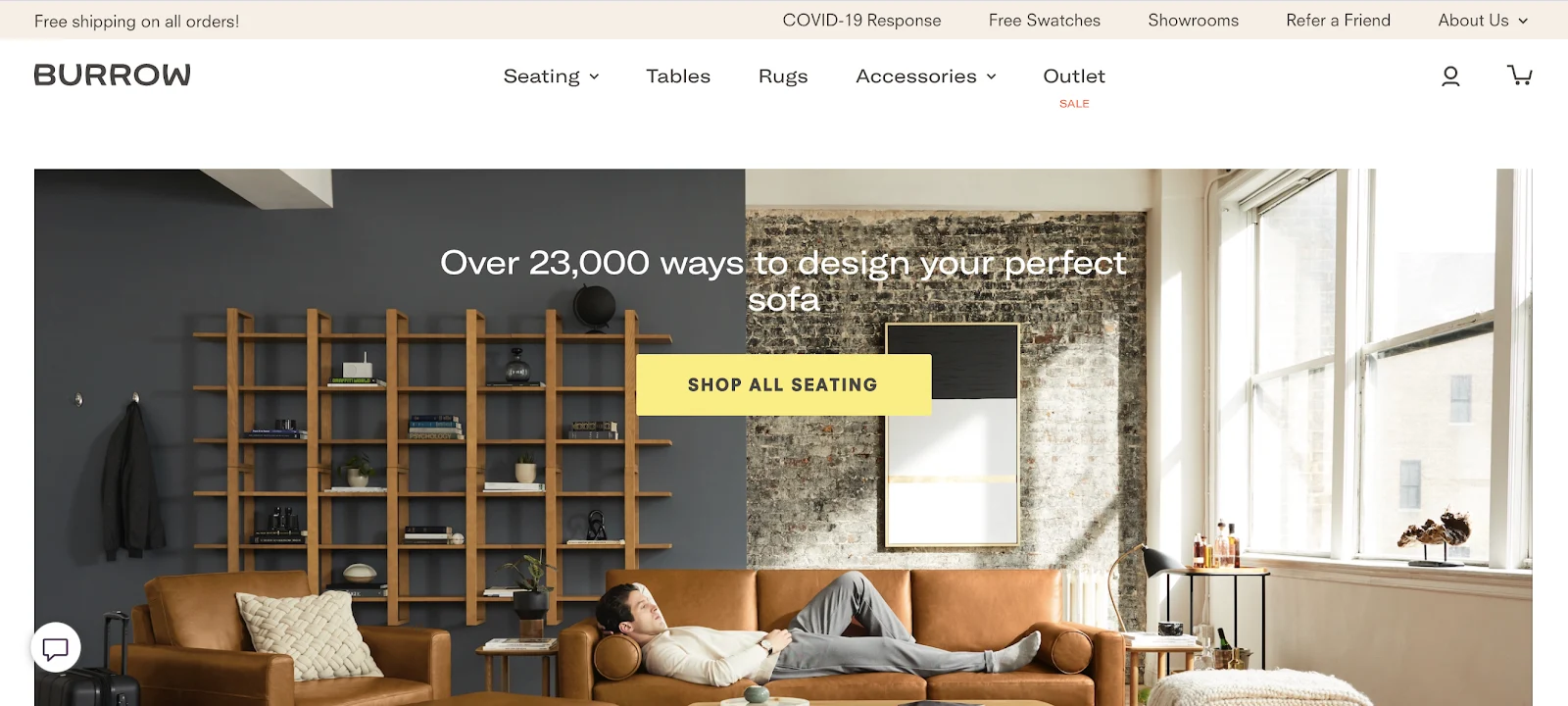
1. Challenges faced.
In addition to needing a powerful back-end platform that could grow and scale with it, Burrow also needed to be able to customise its site quickly and easily. This agility was important to the company’s marketing strategy to constantly update and test landing pages and content to make sure it was working for its audience. Burrow’s ideal solution was one in which templates didn’t limit its creativity and developers weren’t needed to make simple changes
2. Reasons for choosing headless.
Burrow found it could solve all of its challenges by choosing BigCommerce as a scalable back-end system. The reliability and lack of maintenance frees up the company’s team to work on more marketing-focused updates to the site. Burrow is able to use a custom CMS on the front-end so that it’s not too constrained by templates and can create the kind of experiences it wants for its customers. BigCommerce can handle the unique challenges of Burrow’s modular product line on the back-end, and the company has the freedom to customise.
3. Results.
Since launching with its headless solution, Burrow saw a 30% increase in conversion rate in only two months and a 50% increase in site speed and performance. The company was also able to achieve the site it wanted, as Kabeer Chopra, Burrow Co-Founder and CPO, explains:
“Along with operational functions, being headless has empowered us creatively as well; we use a headless CMS to drive modernisation of our platform and to create a great digital experience across multiple channels.”
Canvas 1839
If there’s one industry that’s blowing up right now—and facing some unique challenges in online selling—it’s CBD. Because of the shifting legalities of selling cannabidiol products online, these businesses have faced greater scrutiny from ecommerce platforms, payment providers, shipping services, and everyone in between. Canvas 1839, a Texas-based company selling high-quality CBD creams and lotions, is no stranger to these intricacies.
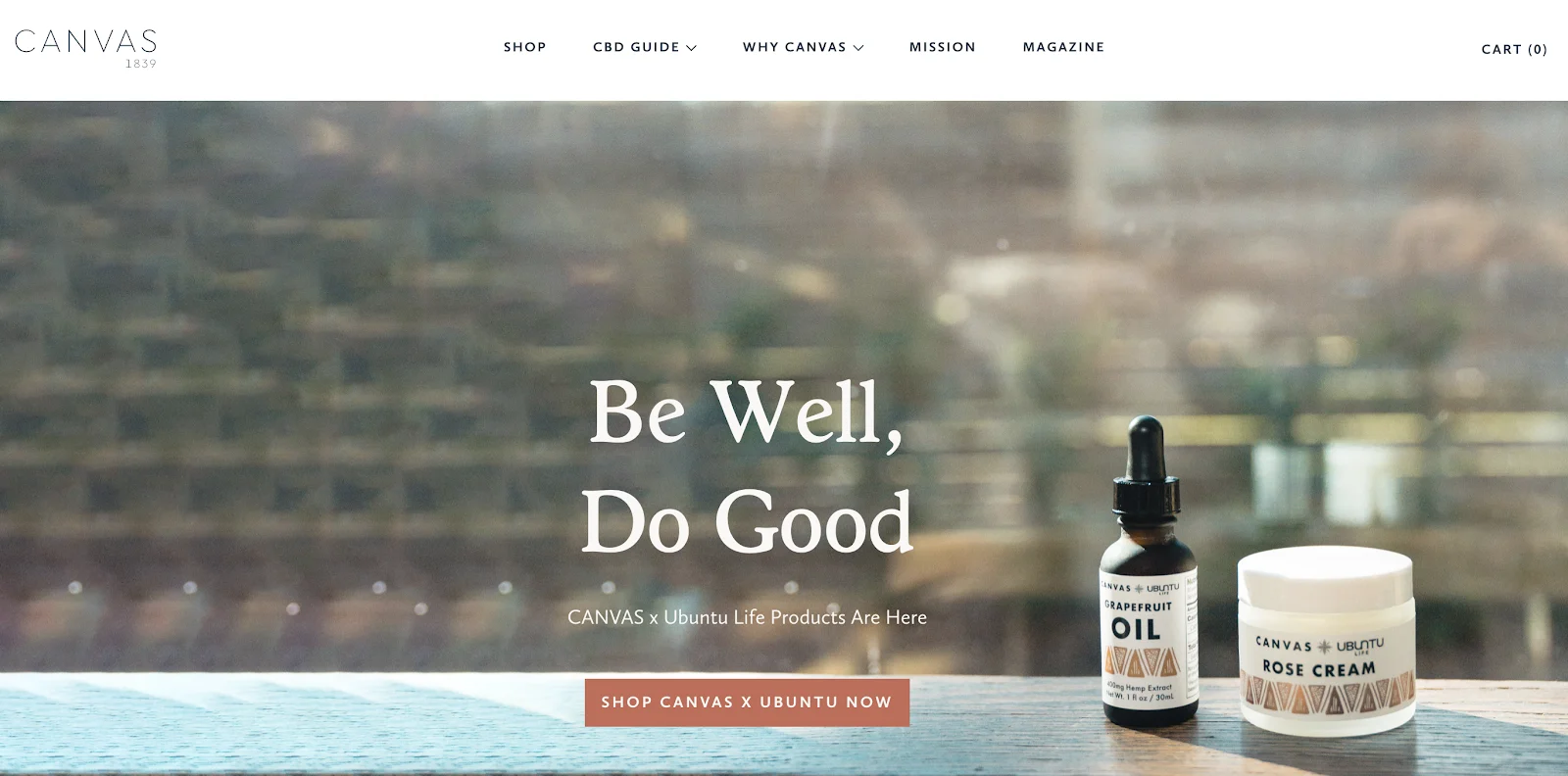
1. Challenges faced.
Like some of the other use cases we’ve talked about, Canvas 1839 soon found it was constrained by its own growth. The company’s platform, Shopify, also limited it in other ways that were specific to its industry, including what payment providers it could use.
2. Reasons for choosing headless.
In addition to wanting a platform that was vocally supportive of CBD merchants, Burrow was also interested in a headless model because the company wanted a quicker, more efficient development cycle for both its developers and marketers. The company wanted its developers to be able to use tools like Gatsby, React, and GraphQL to build the engaging front-end experience, while marketers could easily build and manage the content-heavy pages—all fully integrated to the rest of the website.
3. Results.
Canvas 1839 launched on BigCommerce using a progressive web app (PWA) built on Gatsby, giving it the benefits of a CBD-supportive SaaS ecommerce platform as well as the freedom for innovation on the front-end. This is making things quicker and more efficient for both its developers and marketers. Corey Ward, the Senior Web Developer who worked with Canvas 1839, says it has already received a great reception anecdotally from customers. Ward also expanded on how headless made it possible for the Canvas team to use a SaaS solution:
“We felt more confident that we'd be able to meet whatever challenge they threw at us using tools like Gatsby, React, and GraphQL than we did constraining ourselves to platform-specific tooling that caters to a traditional ecommerce experience. It's a win-win because we rely a lot on development tools like Git, Babel, and Webpack, and none of these are well-supported on any SaaS ecommerce platform that we're aware of.”
LARQ
LARQ is a seller of self-purifying water bottles, designed to solve many of the issues people have with traditional water bottles. The company is highly focused on sustainability and raising money for clean water initiatives.
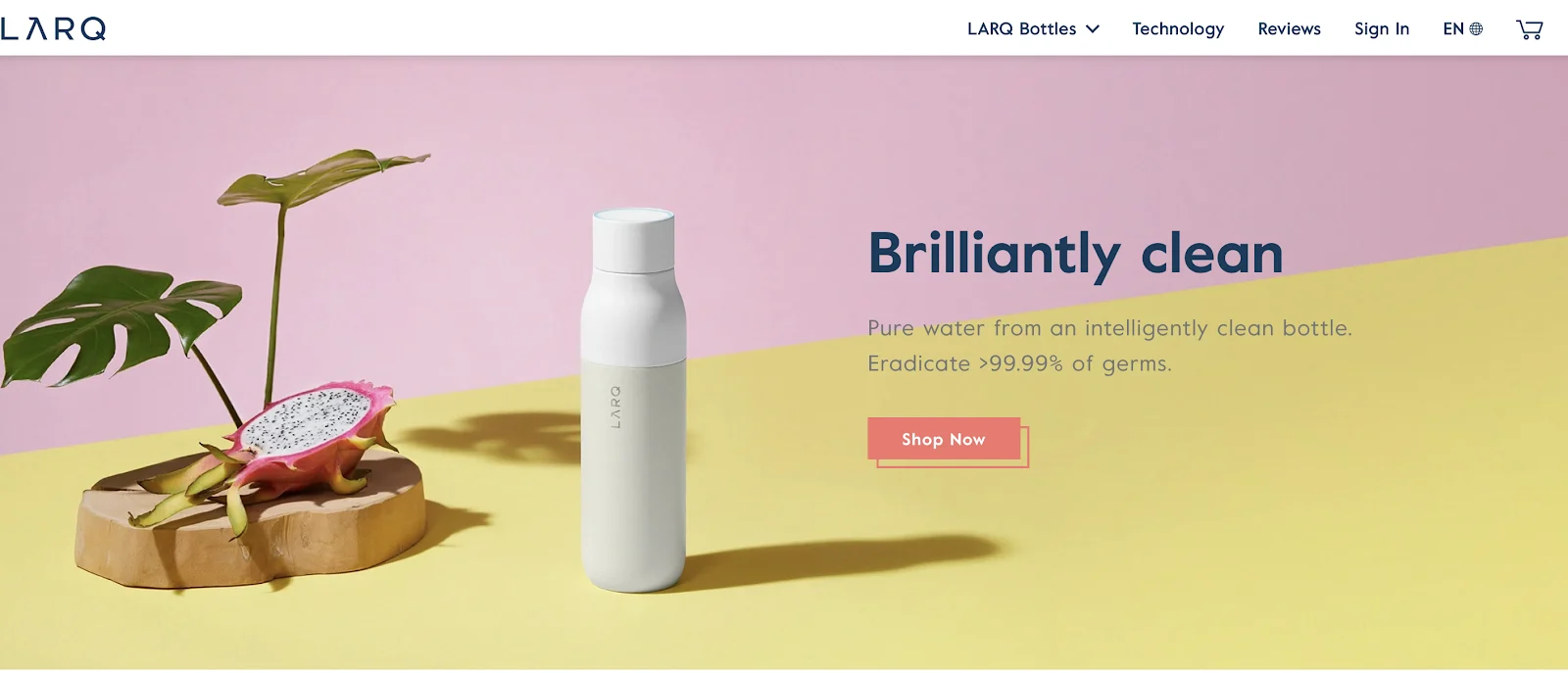
1. Challenges faced.
When seeking an ecommerce platform, the LARQ founders knew they wanted a platform that could not only scale with their growth but provide flexibility for customization. They wanted advanced features for things like multicurrency, especially as they were launching multiple international sites for customers.
2. Reasons for choosing headless.
Headless could provide the customization that LARQ needed, such as giving the company complete control over the content and customer journey. LARQ’s sites are run with BigCommerce as the ecommerce engine on the back-end and a custom solution built with React on the front-end. This enabled the company to control its regional sites (currently US, EU, UK, and Canada) on one single domain.
3. Results.
LARQ was able to launch its ecommerce site on BigCommerce in just two months. Since launching, the company has seen a 400% increase in revenue year-on-year and an 80% increase in conversion rate over three months. LARQ is also excited by how quickly it's been able to manage its international expansion, as Justin Wang, LARQ Co-Founder & CEO explains:
“We now have almost a global presence, reaching everywhere besides the larger part of Asia — which is on our agenda for 2020. The support from BigCommerce around our international growth has been very helpful in making our expansion story a successful one.”
Conclusion
While headless might not be the right fit for every business, for some, it’s a solution that can solve previously unsolvable challenges. These four, very different, brands had varied reasons for seeking out a headless solution, and all of them are seeing success with their new tech stacks.
Headless Commerce Success Stories Frequently Asked Questions

BigCommerce Team
BigCommerce is a leading ecommerce platform that empowers businesses to grow with flexibility and scalability. We are dedicated to helping our customers expand their businesses and improve their bottom line. Through thought leadership on ecommerce trends, best practices, and innovations, we provide in-depth insights into both B2C and B2B strategies, enabling businesses to succeed and thrive in today’s dynamic digital marketplace.
